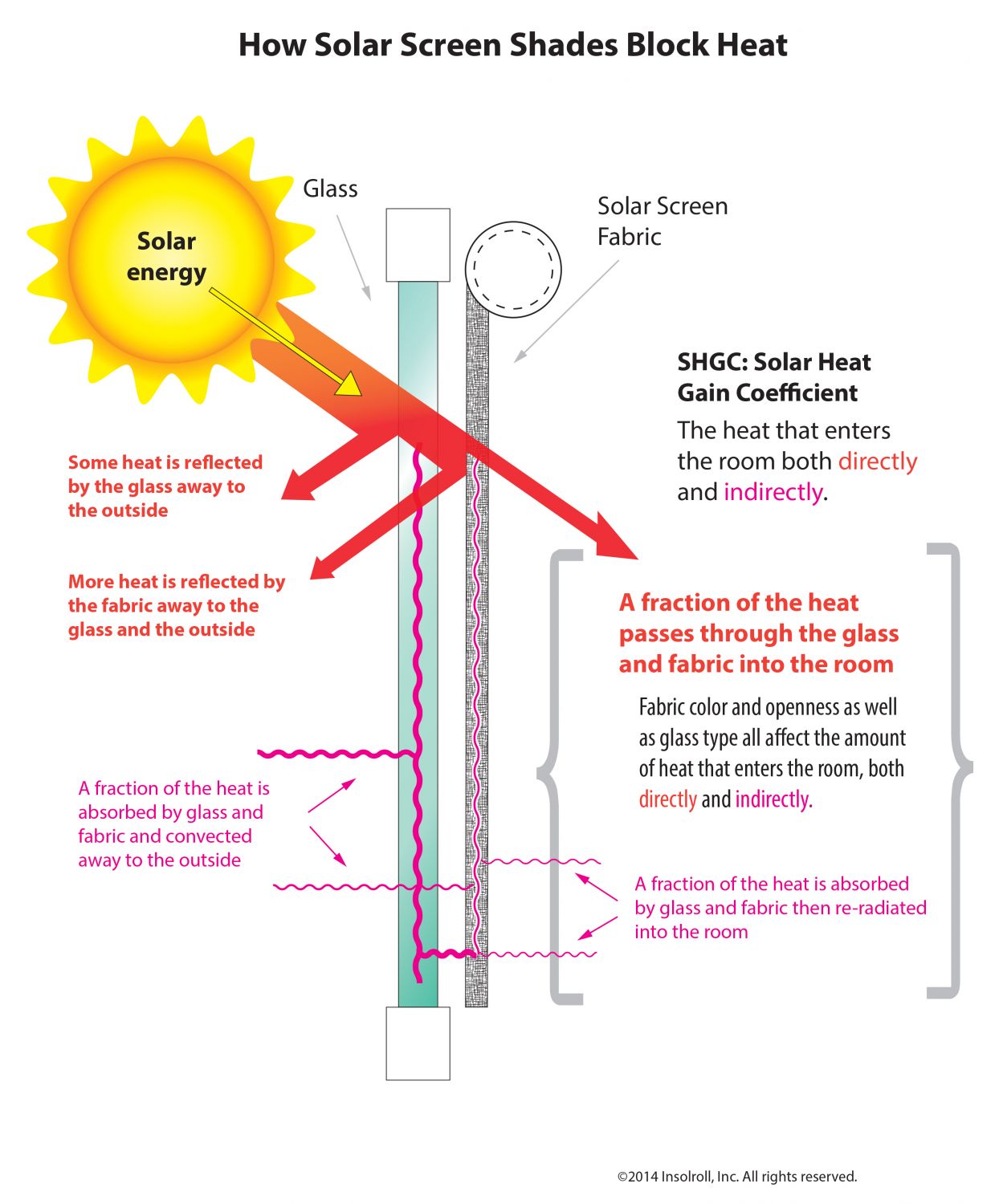
Here at Insolroll, we eat, breathe and sleep solar screen shades, which control the amount of heat and glare that enter your home through the windows. People around here, including me, have been wondering “What’s the deal with SHGC on the fabric sample cards? Why can’t they just put SC on the cards?” (Or truthfully, sometimes, “What the heck is SC/SHGC anyway?“)

*sound of tires screeching*
Hold everything! What??!!
We all know that solar screen fabrics have precise, lab measurable properties that determine how effective they are at stopping heat, glare and UV rays. The properties that have to do with keeping interiors cooler are described as “Shading Coefficient”, or “Solar Heat Gain Coefficient”, and understanding them can help you choose a solar screen fabric for your shades that best meets your needs.
Shading Coefficient (SC) and Solar Heat Gain Coefficient (SHGC) and Solar Screen Shade Performance
When you want to control the heat of the sun coming into your home, you need to have a way of describing how much of that heat makes it through the product and into the room. It’s true of windows and window treatments, and it sounds straightforward enough, but it gets confusing when we start talking about the different measures of value used to describe this simple thing!
Anytime we want to measure something, we have to have a term we use to talk about that measurement. For solar screen fabrics, it’s always been SC, or Shading Coefficient. The SC number gave us an idea of how much heat a fabric allowed into a room, and how that fabric stacked up against other fabric styles or other colors of the same fabric. Today, we’re seeing SHGC, or Solar Heat Gain Coefficient instead. It also indicates the effectiveness of a fabric in blocking heat from entering a room, but the two values are not equal. There’s a lot of head scratching going on right about now…
The difference demystified
It may sound intimidating and difficult to understand, but in reality, it’s pretty simple. SC was (is) a simple description of how much heat makes it into a room through a certain type of glass. In the case of solar screen fabric, we are considering the glass and the screen together, so it’s a measure of how much heat the glass and fabric together let in to the room. The number really is a ratio of how much heat our glass and fabric let in compared to how much a single pane of 1/4″ double strength glass would let in (at Insolroll, we use the values for 1/4″ glass as standard). The important thing really is how the SC of one fabric or color compares to the SC of another fabric or color.
SHGC, or Solar Heat Gain Coefficient, is now the preferred term, because it tells us with a little more accuracy how much heat is making it into the room through all the parts of the complete window opening system- glass/frame assembly plus fabric. It also accounts for the heat that is absorbed and either re-radiated into the room or convected away to the outside. So it’s a more accurate indication, although again, the really important thing is to compare values between fabrics.
Apples to Apples
As the industry transitions to using SHGC instead of SC, it’s worth paying a little bit more attention to which value is cited, so that you can make accurate comparisons. It’s easy to convert SC to SHGC, by multiplying by 0.87. You’re multiplying by less than 1, so the converted value will be just a little bit lower, and remember to only compare it to another fabric’s SHGC value, not SC. In the end, the simple rule of thumb is that whether you’re comparing SC to SC or SHGC to SHGC, or apples to apples, the lower the number, the more heat that fabric (with the window itself) blocks heat from entering the room. Simple, right? Who knew?
Editor’s Note: Coming soon, an update and a couple of clarifications on this topic, which has generated a lot of interest and comments out in the social-sphere… watch for more! 10/10/14
